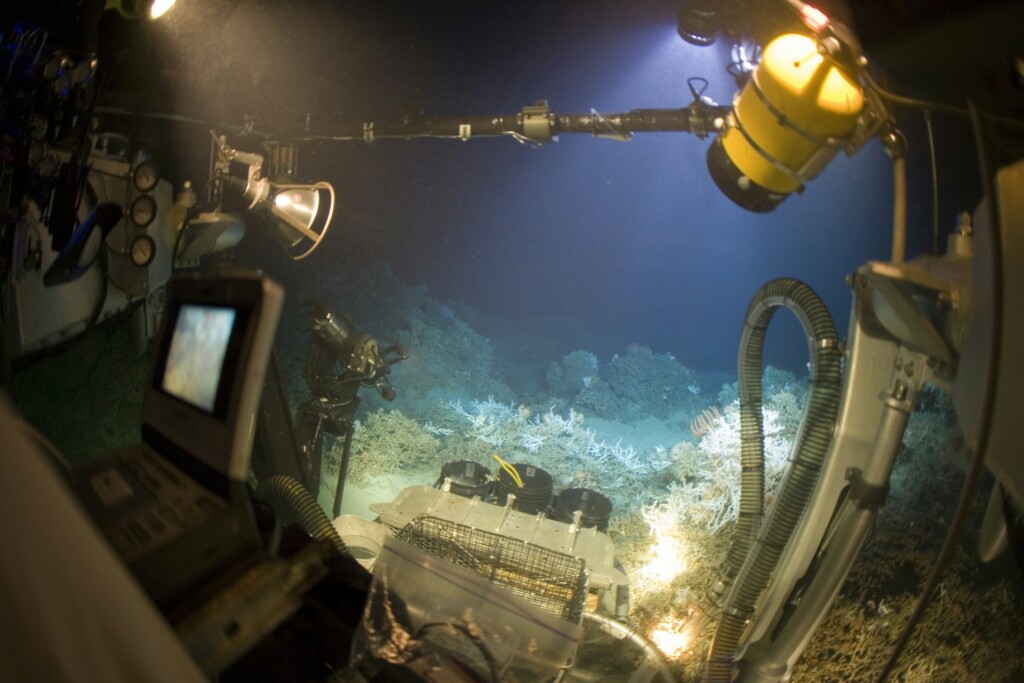Imagine a world hidden beneath the waves, where the silent dance of steel and saltwater creates the backbone of marine infrastructure. This is the fascinating domain of underwater welding, a critical yet often overlooked aspect of marine construction.
From the intricate web of pipelines stretching across the ocean floor to the robust frameworks of deep-sea structures, underwater welding plays a pivotal role in keeping these essential operations afloat. Despite being out of sight and mind for most, this specialized field demands stringent safety protocols to protect the skilled welders who brave the depths.
In this blog post, discover how underwater welding supports the seamless functionality of our marine environments, examining the methods, key practices, and technological innovations that uphold the integrity of our submerged structures.
The World of Underwater Welding
What is Underwater Welding?
Underwater welding is a specialized process that combines traditional welding techniques with the challenges of working in aquatic environments. It involves joining metal components submerged in water, often at significant depths.
The ability to perform welding underwater allows for the repair and maintenance of marine structures without the need for costly and time-consuming dry docking.
The practice is indispensable in marine construction, where corrosion is an ongoing battle. Welders use their skills to maintain and repair structures such as oil rigs, ships, and bridges, ensuring they remain safe and functional.
This specialized field requires not only welding expertise but also skill in handling the unique challenges posed by working underwater, such as limited visibility and varying water pressures.
Types of Underwater Welding
There are two primary types of underwater welding: wet welding and dry welding, each serving distinct purposes and environments.
Wet welding involves performing welding tasks directly in the water, using waterproof electrodes. It’s fast and cost-effective, making it ideal for emergency repairs and situations where quick fixes are needed.
On the other hand, dry welding takes place in a specially-created dry environment. This is usually accomplished by surrounding the weld area with a pressurized chamber, keeping water out.
Dry welding provides better control over the welding environment, resulting in higher-quality welds. However, it is more complex and expensive than wet welding, often reserved for critical repairs that require precision.
The Role of Underwater Welding in Marine Construction
It plays a pivotal role in marine construction, enabling the creation and maintenance of underwater structures that are essential for various industries.
It ensures that pipelines remain leak-free, oil platforms stay anchored, and ship hulls are intact. The ability to carry out repairs and installations underwater is a game-changer for industries that rely on offshore resources.
The growing demand for energy and resources has increased the need for robust marine infrastructure. Underwater welders work tirelessly to ensure that these infrastructures are safe and reliable. Their work supports essential services like energy production and transportation, contributing significantly to the global economy.
Pipeline Removal and Maintenance
Importance of Pipeline Maintenance
Pipelines are the lifelines of subsea oil and gas operations, responsible for transporting valuable resources across vast distances. Ensuring the integrity and functionality of these pipelines is critical, as leaks or failures can lead to catastrophic environmental and economic consequences.
Regular maintenance and inspection are necessary to prevent corrosion and address any potential issues before they escalate. Underwater welders are at the forefront of these efforts, using their skills to repair and reinforce aging pipelines. Their work helps preserve the safety and efficiency of subsea transportation systems.
The Challenges of Pipeline Removal
Though maintenance is essential, there comes a time when removing an old or damaged pipeline is the best course of action. Pipeline removal presents unique challenges, requiring specialized equipment and expertise. The process involves cutting and extracting sections of the pipeline, often in deep and remote areas.
Underwater welders play a key role in pipeline removal, using their skills to execute precise cuts and ensure safe extraction. Their work demands meticulous planning and execution, as even minor errors can lead to significant delays and complications.
Techniques for Successful Pipeline Removal
Successful pipeline removal relies on a combination of advanced techniques and technologies. One such technique is hot-tapping, which allows sections of a pipeline to be removed without disrupting the flow of resources.
This method requires expert precision and coordination and is crucial for minimizing downtime during repairs. Another technique involves the use of remotely operated vehicles (ROVs) to assist in cutting and handling pipeline sections.
ROVs provide an extra layer of safety, allowing welders to work remotely in hazardous or hard-to-reach environments. These cutting-edge tools and strategies enable efficient and safe pipeline removal operations.
Safety Protocols in Underwater Welding
The Importance of Safety
Safety is paramount in underwater welding, where workers face unique hazards that can pose serious risks. These include potential exposure to high-pressure environments, limited visibility, and the presence of marine life.
Ensuring the safety of underwater welders is a top priority, requiring rigorous training and adherence to strict protocols for safety.
Organizations involved in welding invest heavily in safety measures, recognizing that the well-being of their workers is critical to the success of their operations. By prioritizing safety, these organizations help prevent accidents and foster a culture of responsibility and vigilance.
Key Safety Protocols
Several protocols are essential for mitigating risks in welding. First and foremost is ensuring that all welders receive comprehensive training, covering the complexities of welding in aquatic environments. This training includes instruction on emergency procedures and the use of specialized equipment.
Another critical aspect of safety involves regular equipment inspections and maintenance. By keeping tools and machinery in optimal condition, organizations can reduce the likelihood of malfunctions and accidents.
Additionally, welders must wear appropriate personal protective equipment (PPE), including wetsuits, helmets, and gloves, to safeguard against potential hazards.
Innovations in Safety Technology
Advancements in technology continue to enhance safety measures in welding. Innovations like acoustic positioning systems and underwater cameras provide welders with real-time visualization and monitoring capabilities, improving situational awareness and reducing the risk of accidents.
Furthermore, the integration of artificial intelligence and machine learning into welding processes offers new possibilities for predictive maintenance and risk assessment. These technologies analyze data to identify potential issues before they develop, allowing organizations to take proactive measures and prevent accidents.
Deep-Sea Infrastructure
Building the Future Underwater
It refers to the construction of complex systems and structures below the ocean’s surface. These include everything from underwater tunnels and bridges to offshore oil rigs and renewable energy installations.
The successful development and maintenance of deep-sea infrastructure are critical for supporting modern industrial activities.
Underwater welding is integral to building and maintaining these structures, providing the strength and durability needed to withstand harsh marine conditions. Welders work tirelessly to ensure that every joint and connection is secure, allowing these structures to perform their intended functions safely and reliably.
Current Trends in Deep-Sea Construction
The field of deep-sea construction is constantly evolving, driven by advances in technology and growing demand for sustainable solutions. One notable trend is the increased use of renewable energy sources, such as offshore wind farms.
These projects require the construction of large-scale infrastructure capable of generating and transmitting power.
Another trend is the development of underwater data centers, which offer an innovative solution to the challenges of energy consumption and cooling.
These centers leverage the natural cooling properties of seawater, reducing the need for energy-intensive cooling systems and minimizing the environmental impact of data storage.
The Role of Innovation
Innovation plays a crucial role in the continued development of deep-sea infrastructure. Cutting-edge materials, such as corrosion-resistant alloys and advanced coatings, help protect structures from the harsh marine environment.
These innovations extend the lifespan of underwater installations and reduce the need for frequent maintenance and repairs. Additionally, the integration of robotics and automation streamlines construction processes, allowing for greater precision and efficiency.
Remotely operated vehicles (ROVs) and autonomous underwater vehicles (AUVs) perform tasks that would otherwise be challenging or hazardous for human workers, enhancing safety and productivity.
Welding Techniques and Technologies
Traditional Welding Techniques
Traditional welding techniques form the foundation of underwater welding, providing welders with the skills and knowledge needed to perform essential tasks. Techniques such as shielded metal arc welding (SMAW) and gas tungsten arc welding (GTAW) are commonly used in underwater applications.
These techniques involve the use of consumable electrodes and protective gas shields to create strong, durable welds. Welders must carefully control the welding environment to ensure the quality and integrity of each joint, taking into account factors like water pressure and temperature.
Modern Advancements in Welding Technology
Modern advancements in welding technology continue to push the boundaries of what is possible in underwater welding. One such advancement is the use of friction stir welding (FSW), a technique that produces high-quality welds without the need for consumable materials or protective glasses.
FSW is particularly well-suited for welding non-ferrous metals, such as aluminum and magnesium, making it an ideal choice for applications where lightweight materials are required. The technique offers several advantages, including improved weld strength and reduced distortion, making it an attractive option for underwater projects.
The Future of Underwater Welding
The future of underwater welding holds exciting possibilities for the marine construction industry. Emerging technologies, such as laser welding and additive manufacturing, have the potential to revolutionize the way underwater structures are built and maintained.
Laser welding, for example, offers precise control and minimal heat input, resulting in high-quality welds with minimal distortion. This technology has the potential to improve efficiency and reduce costs, making it an attractive option for future projects.
Conclusion
Underwater welding is an indispensable part of marine construction, playing a vital role in maintaining the infrastructure that supports modern industrial activities. From pipeline removal to deep-sea structures, the work of underwater welders is essential for ensuring the safety and reliability of these vital systems.
By understanding the challenges and advancements in this field, businesses can better appreciate the importance of welding and its role in shaping our world beneath the waves.
For those eager to explore this exciting field further, resources and expert guidance are available to support their journey into the depths of underwater construction.






